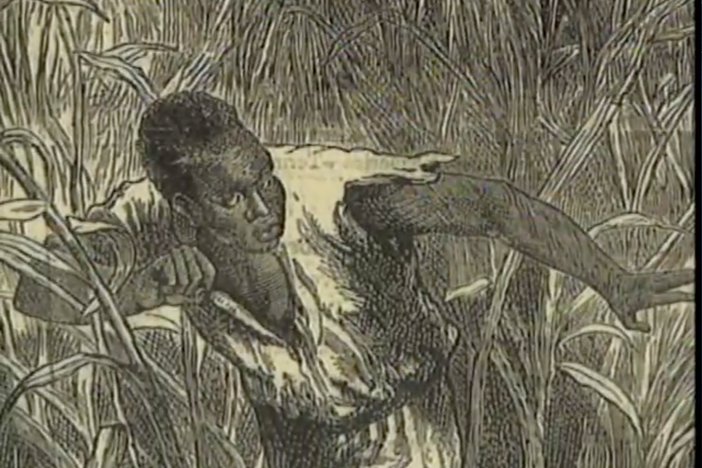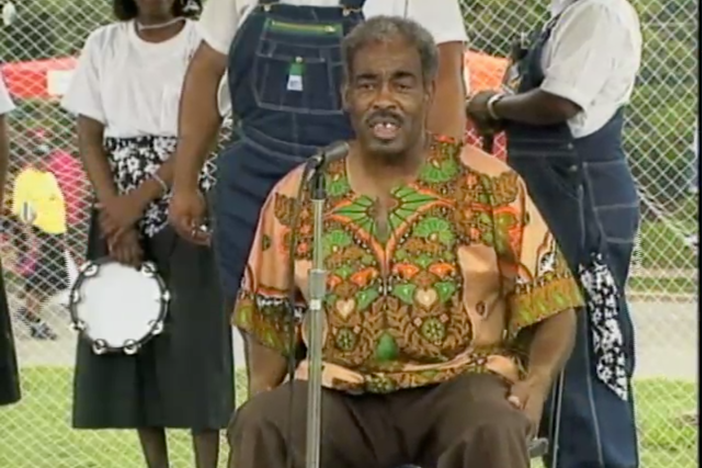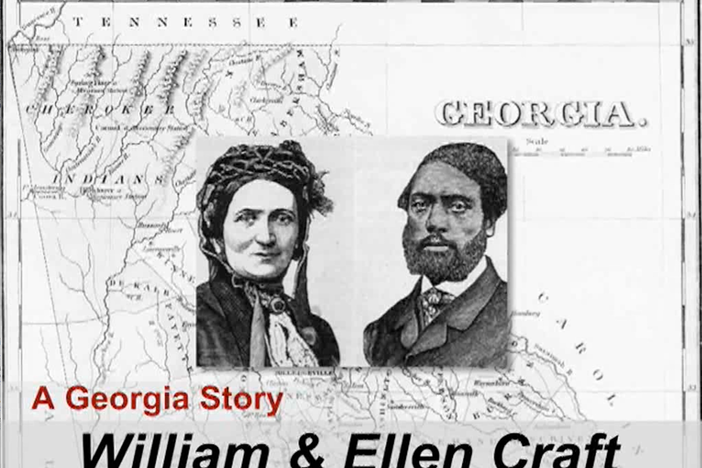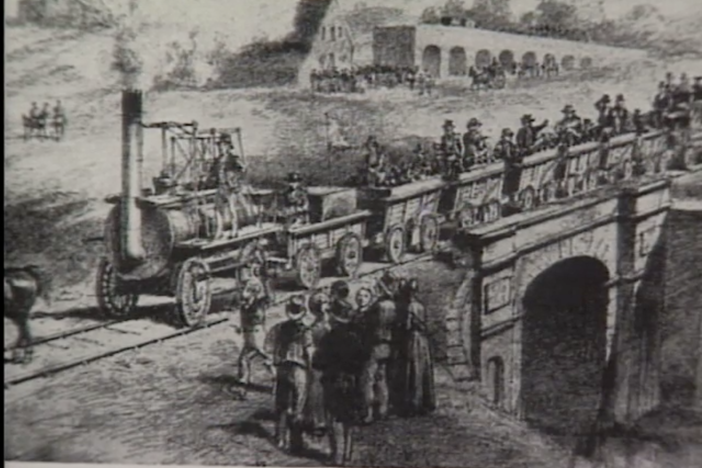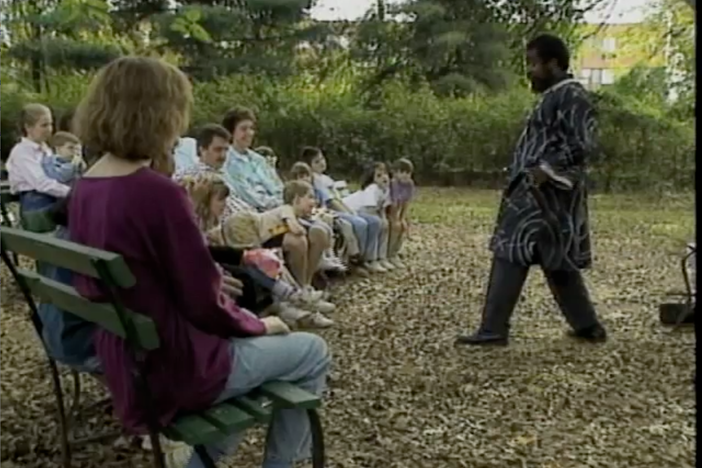A Trip to Hog Hammock
Just a short ferry boat ride away from the Georgia coast lies Hog Hammock, an African-American community on Sapelo Island with cultural traditions that tie it to Africa. Cornelia Bailey, a descendant of slaves who worked the plantations on Sapelo, imagines the terrible sadness her ancestors felt knowing they were so far away from home with no way to return. Today the residents of Hog Hammock are recognized for the African cultural traditions they pass on, such as making baskets, cast nets, and the unique music of the Sea Island Singers.
A Trip to Hog Hammock
Just a short ferry boat ride away from the Georgia coast lies Hog Hammock, an African-American community on Sapelo Island with cultural traditions that tie it to Africa. Cornelia Bailey, a descendant of slaves who worked the plantations on Sapelo, imagines the terrible sadness her ancestors felt knowing they were so far away from home with no way to return. Today the residents of Hog Hammock are recognized for the African cultural traditions they pass on, such as making baskets, cast nets, and the unique music of the Sea Island Singers.
Social Studies
Explain the transition of Georgia into a royal colony with regard to land ownership, slavery, alcohol, and government.
Give examples of the kinds of goods and services produced and traded in colonial Georgia.
1. How was Georgia’s African heritage passed down?
2. Why was this part of Georgia somewhat familiar to these former Africans?
3. Explain why seemingly healthy slaves died.
4. Why were slaves forbidden to play drums? How did African slaves compensate for not being able to play the drums?
5. Why were slaves not permitted in the early days of the Georgia colony? Explain why this law would be repealed by 1750.
1. The Hog Hammock community is a historically rich community in Georgia. Use this video to begin a virtual exploration of Hog Hammock via the Internet to understand its role in Georgia history.
2. In small groups, have students discuss their family traditions that are passed down from generation to generation. What are some traditions shared among classmates? What are different ones?
ham bone: A certain type of dance that involves making noise with the body, especially by slapping parts of the body with one's hands
culture: the sum total of the beliefs, accomplishments, and behavior patterns of a group of people, learned and socially and transmitted from one generation to another
heritage: something that is passed down from preceding generations; a tradition
Sapelo Island: one of Georgia's barrier islands
1. How was Georgia’s African heritage passed down?
The parents who had learned the stories and skills of their parents handed down this knowledge to their own children. In this way, the crafts, skills, and sometimes the language was passed down to the next generation.
2. Why was this part of Georgia somewhat familiar to these former Africans?
These were people who had been brought over as slaves from the rice coast of west Africa. This part of Georgia was basically the same environment as their homeland.
3. Explain why seemingly healthy slaves died.
These slaves missed their homeland and could not acclimate to their new lives as slaves.
4. Why were slaves forbidden to play drums? How did African slaves compensate for not being able to play the drums?
Slave owners were afraid of slave rebellions. They thought that if they allowed their slaves to play the drums, they would send signals to slaves on other plantations, fomenting a rebellion against the slave-owners. They put the beat to their music by body slapping, buck-dancing and mouth-popping – using their own body to make rhythms. (a la Bobby McFerrin)
5. Why were slaves not permitted in the early days of the Georgia colony? Explain why this law would be repealed by 1750.
Slaves were thought to promote laziness on the part of the early land holders of Georgia. It was thought that if they allowed slaves, the people would not work their own land. They would let the slaves do it all. The law was repealed because the Georgia colonists noticed that the South Carolina farmers/plantation owners were able to work more land with slaves than they were without slaves. They wanted to make just as much money and compete with these other colonies. They felt they needed slaves to make the land profitable.
